Whether you’re a hardcore gamer trying to maximize visuals, a graphic designer seeking pixel perfection, or want your media to look as smooth as possible – chances are you’ve heard of anti-aliasing.

But what exactly is it, and how does it work?
In this post, I’ll break down the ins and outs of anti-aliasing so you can harness it for immaculate graphics.
Introduction to Anti-Aliasing
Anti-aliasing refers to techniques that smooth jagged edges (jaggies) in digital images and video by minimizing the visual stairstepping effects (aliasing artifacts). It helps create cleaner, crisper graphics by reducing unwanted jaggies when representing angled lines on a pixelated grid.
The main purpose of anti-aliasing is to improve the overall visual quality and realism of rendered graphics. Without it, images can look noisy, pixelated with jagged edges, and artificial. By intelligently blending pixels through filtering and sampling, anti-aliasing makes curves, diagonals, and motion appear more natural and lifelike.
It works by minimizing the abrupt transition between edges and background. Take the angled line of a triangle, for example. Without anti-aliasing, its edges may appear jagged, pixelated, and stairstepped as they cross over the square pixels (known as aliasing). Anti-aliasing will sample colors around those edges and blend pixels to smooth out those rough transitions.
Different Types of Anti-Aliasing
There are a variety of anti-aliasing techniques in use, each with its own strengths and weaknesses. Let’s look at some of the most common.
Super Sampling Anti-Aliasing (SSAA)
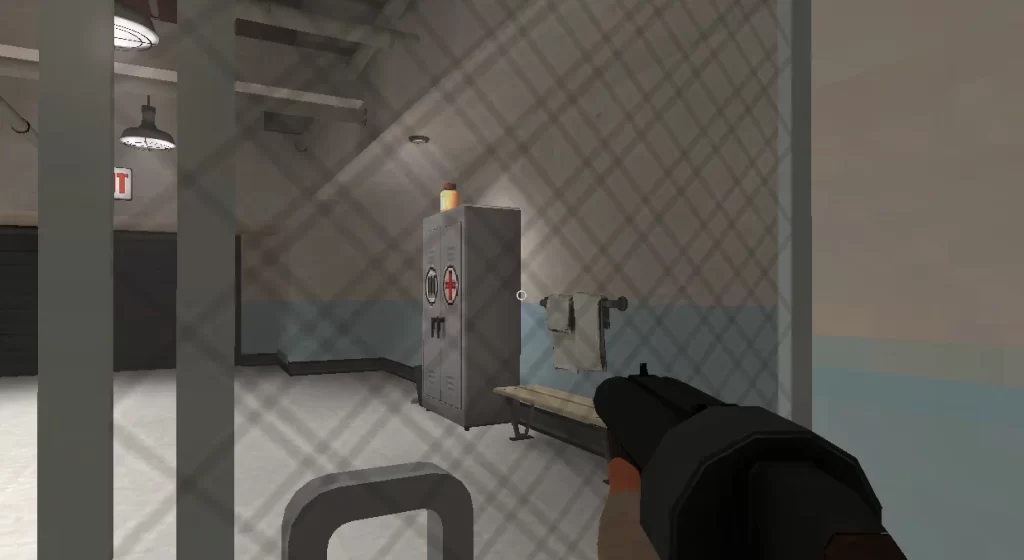
Photo Source: REDDIT
Also known as full-scene anti-aliasing, SSAA renders a scene at a higher resolution before downscaling to the target resolution. This supersampling improves image quality by reducing jaggies across the entire image. It can produce excellent results but is extremely demanding on hardware.
Multi-Sample Anti-Aliasing (MSAA)
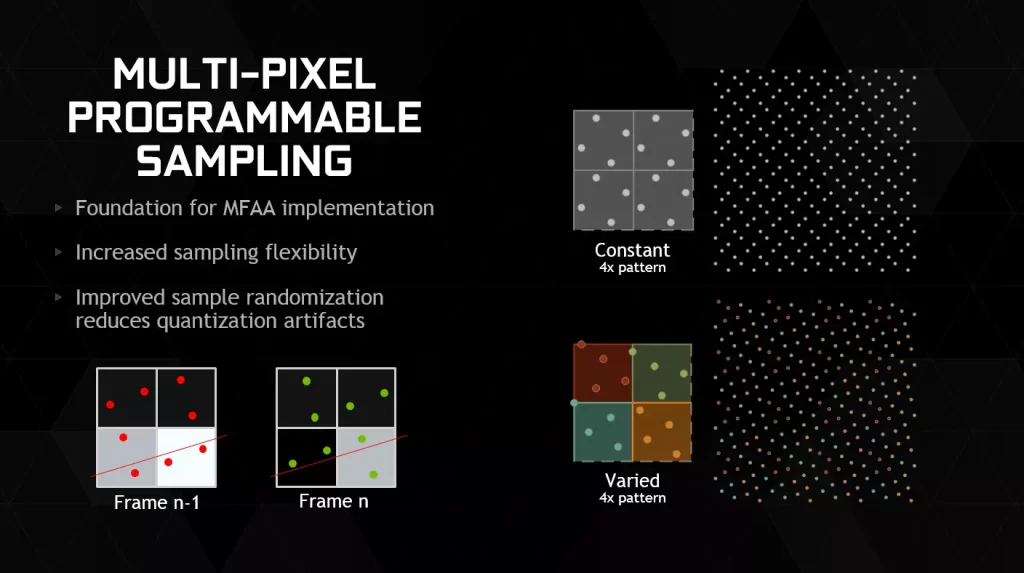
Photo Source: NVIDIA
MSAA is a more optimized version of SSAA. It only supersamples polygon edges rather than the entire image. This focused approach skips unnecessary work, reducing GPU load. MSAA provides solid edge smoothing with a reasonable performance cost.
Coverage Sampling Anti-Aliasing (CSAA)
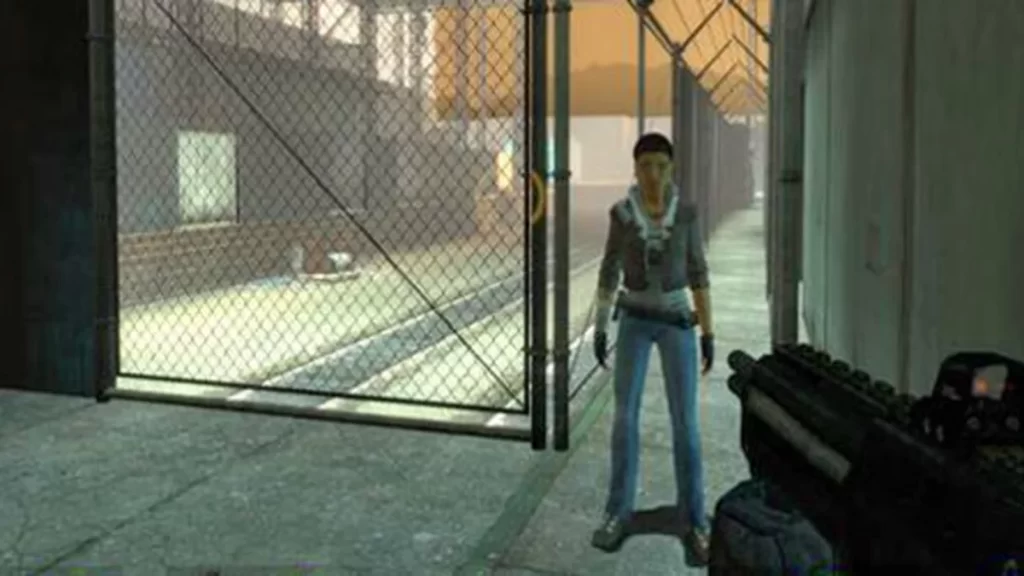
Photo Source: TECMUNDO
CSAA is Nvidia’s take on optimized anti-aliasing. It works similarly to MSAA but with additional transparency processing. The result is enhanced edge smoothing with minimal performance impact.
Fast Approximate Anti-Aliasing (FXAA)

Photo Source: TECMUNDO
FXAA is a post-process filter applied after rendering is complete. It rapidly scans pixels to detect edges before gently blurring those areas. FXAA is fast and requires minimal resources. However, it can sometimes excessively soften image details.
Temporal Anti-Aliasing (TXAA)
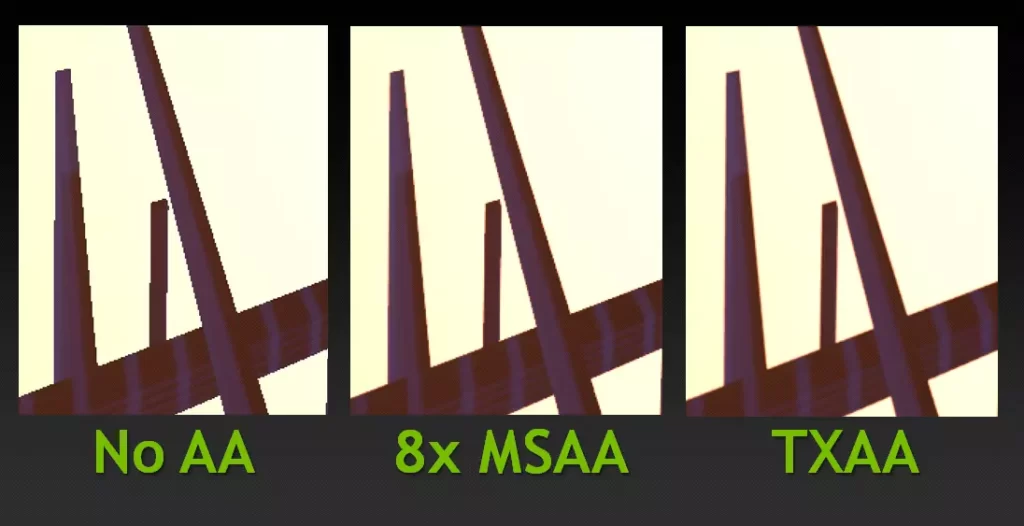
Photo Source: TECMUNDO
TAA leverages data from consecutive frames to filter jagged edges over time. This technique produces cleaner edges than FXAA but can lead to ghosting artifacts. TAA is ideal for VR and real-time graphics due to its excellent performance.
Deep Learning Super Sampling (DLSS)
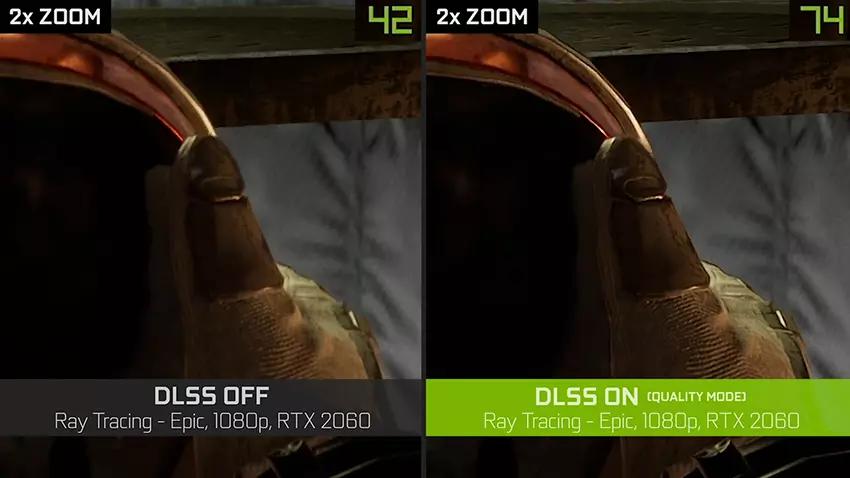
Photo Source: TECMUNDO
DLSS utilizes deep learning and AI to boost image quality and smooth edges. It combines the benefits of TAA and supersampling but with minimal performance impact. This new technique gives a major boost to real-time anti-aliasing.
Enhanced Quality Anti-Aliasing (EQAA)
EQAA uses a hybrid approach that employs aspects of MSAA and SSAA selectively. It analyzes each pixel to apply only the necessary amount of anti-aliasing. The result is of great quality with a minimal performance impact.
Comparison Table
| Anti-Aliasing Technique | How It Works | Image Quality | Performance Impact |
|---|---|---|---|
| Super Sampling (SSAA) | Renders at higher resolution, downscales | Excellent | Very High |
| Multi-Sampling (MSAA) | Samples edge only, not the full scene | Good | Moderate |
| Coverage Sampling (CSAA) | Optimized edge sampling by Nvidia | Very Good | Low |
| Fast Approximate (FXAA) | Post-process filter to detect/blur edges | Fair | Negligible |
| Temporal (TAA) | Leverages data from consecutive frames | Good | Low |
| Deep Learning (DLSS) | AI upscaling powered by deep learning | Excellent | Low |
| Enhanced Quality (EQAA) | Hybrid sampling and post-processing | Excellent | Moderate |
The key points of comparison are image quality, performance impact, and how each technique handles anti-aliasing.
Impact on Graphics Quality
Anti-aliasing can greatly enhance image quality, especially for curved shapes, text, and objects in motion. The effectiveness depends on the technique used and the content type. For example, MSAA handles hard edges well but won’t smooth out intricate textures. FXAA may sap fidelity from details.
There are also performance trade-offs to consider. SSAA’s brute force approach delivers unrivaled quality but at a huge performance cost. In contrast, optimized methods like FXAA require minimal resources. Finding the right balance for your system and content is key.
Choosing the Right Method
For gamers, first, evaluate your PC hardware. Those with high-end rigs can turn up the dial with MSAA or SSAA for jaw-dropping visuals. Mid-range systems can still benefit from optimized options like FXAA, TAA, or Nvidia’s DLSS. For older PCs, disable anti-aliasing to maximize performance.
Game developers should consider how prominent edges are in their specific game. Stylized games with strong lines can really shine with SSAA or MSAA. Photorealistic games may only need a light touch of FXAA or TAA to round off jaggies.
Uses in Different Industries
Gaming
The real-time rendering demands of gaming require highly optimized anti-aliasing like TAA, DLSS, and AMD’s FSR. These provide solid edge smoothing without tanking FPS on commonly used GPUs. FXAA is another option to eke out extra frames.
Image/Video Editing
Production houses can use SSAA or super-high MSAA for still images and offline rendering. Animation studios will leverage these techniques as well for CGI films. The additional rendering time is worth it for the huge boost in final image quality.
Other Applications
Anti-aliasing also brings value to CAD/CAM software, graphic design tools, and visualization apps. MSAA strikes the right balance between quality and interactivity when manipulating wireframes and solid models.
The Future of Anti-Aliasing
Recent years introduced intelligent anti-aliasing methods based on machine learning and neural networks like Nvidia’s DLSS. These leverage smart upscaling powered by GPUs and deep learning. AMD offers a similar solution called FidelityFX Super Resolution (FSR).
These new techniques allow for SSAA-level quality but with performance closer to basic FXAA, giving users the best of both worlds. Ray tracing is another frontier enabling more realistic anti-aliasing based on simulated light physics. The future is bright for ever more immersive, smooth graphics!
Final Thoughts
While anti-aliasing may seem like a minor technical detail, it can greatly enhance image quality in games, video, photography, and more. The many techniques aim to smooth jagged pixel edges but strike different balances of quality and performance. With some knowledge of the various options, you can enable anti-aliasing specially tuned for your content and hardware. So don’t hesitate to turn on anti-aliasing and marvel at those buffed-out jaggies!

About Author
I’m Zeshan, a passionate PC builder and gamer with a vision to empower fellow gaming enthusiasts with the best gaming gadgets available in the market. With over seven years of hands-on experience in the gaming industry, I’ve dedicated my life to exploring, testing, and reviewing cutting-edge gaming gear that takes your gaming experience to the next level.

